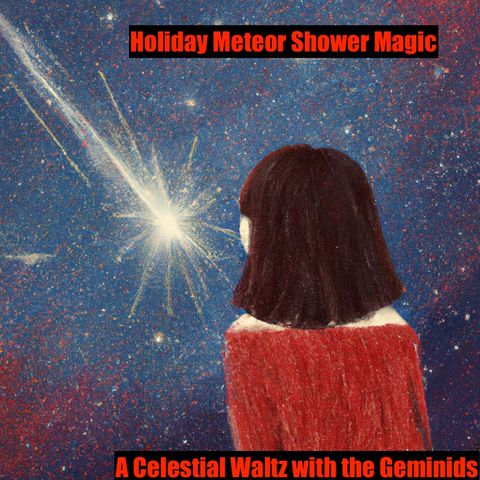When Fire Rained from the Heavens: A History of Meteor Showers Through Human Eyes While the Geminids dance their fiery ballet across the night sky tonight, their story stretches back further than our own short chapters. They, like countless other meteor showers, have etched their celestial tales across the tapestry of human history, sparking fear, wonder, and wonderous myths in their wake. Early civilizations saw them as omens, harbingers of change, etched in the fleeting flames of falling stars. The ancient Greeks believed they were the tears of Phaeton, a reckless chariot driver who scorched the sky, mirroring the Geminids' fiery descent. For the Babylonians, they were celestial arrows, messages from vengeful gods. Even Native American tribes saw them as arrows, but from the spirits of their ancestors, guiding them on their journey. As science unfurled its tendrils, interpretations shifted. Early astronomers, like the Babylonians, meticulously charted their paths, recognizing patterns in the chaos. Others, like Johannes Kepler, saw them as cosmic projectiles, hurling through the void. Yet, the allure of myth persisted. In China, they were celestial dragons, their fiery breaths painting the sky. In Japan, they were the tears of Tanabata, two star-crossed lovers separated by the Milky Way, their tears raining down in mournful beauty. The Industrial Revolution brought a new lens to view these celestial spectacles. Scientific advancements allowed for more precise predictions, turning showers like the Geminids from harbingers to anticipated wonders. Public "star parties" became a fashionable pastime, with Victorian ladies swooning over shooting stars and gentleman astronomers sketching their fiery paths. Today, we stand on the precipice of a new understanding. Meteor showers aren't just omens or celestial tears; they're the whispers of ancient worlds, carrying the dust of comets and asteroids, telling stories of collisions and cosmic journeys. We study them to understand the formation of our solar system, the birth and death of stars. Yet, even with scientific explanations, the magic endures. When a shooting star streaks across the sky, a primal gasp escapes our lips, a connection to those who first looked up in wonder, weaving tales of fire and fate. The Geminids may be celestial embers, but the stories they ignite in our hearts, the connections they forge across time and cultures, burn with a light all their own. So tonight, as you witness the Geminids' celestial waltz, remember that you're not just a watcher, but a part of a story stretching back across millennia. Each shooting star is a brushstroke in the grand narrative of the cosmos, painting our night sky with whispers of wonder and a reminder of our own fleeting but captivating place in the universe. Let the stardust rain down, let the myths mingle with science, and let the Geminids continue their ancient dance, sparking new stories and reigniting the fire of human curiosity in every heart that gazes skyward. Thanks for listening to Quiet Please. Remember to like and share wherever you get your podcasts.
show less

